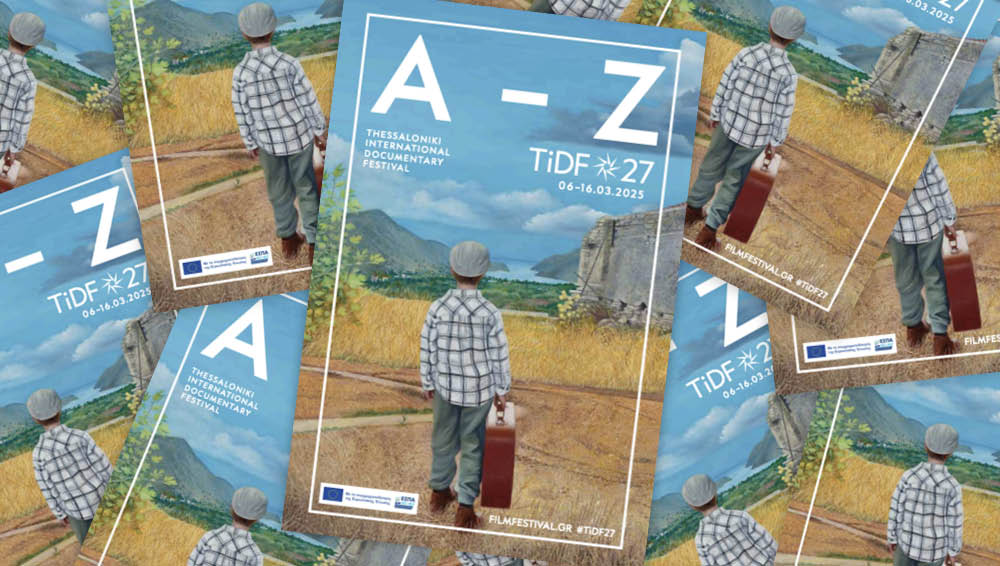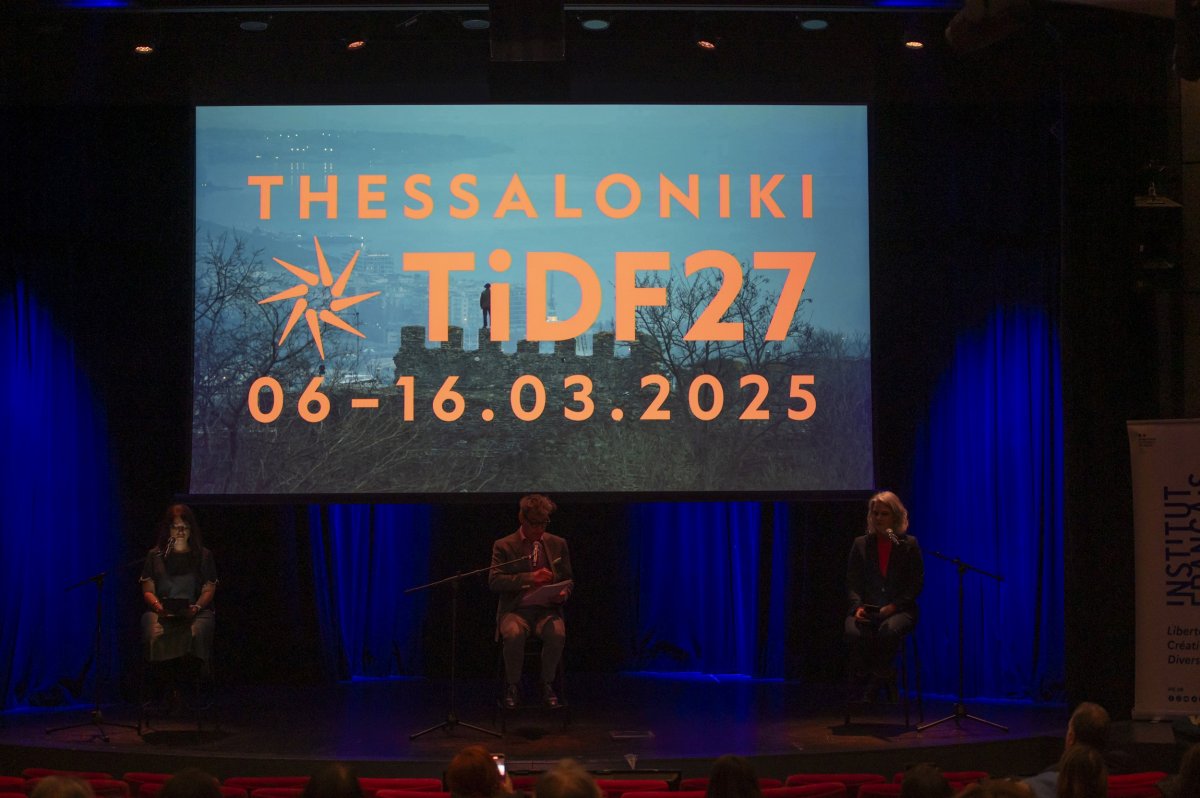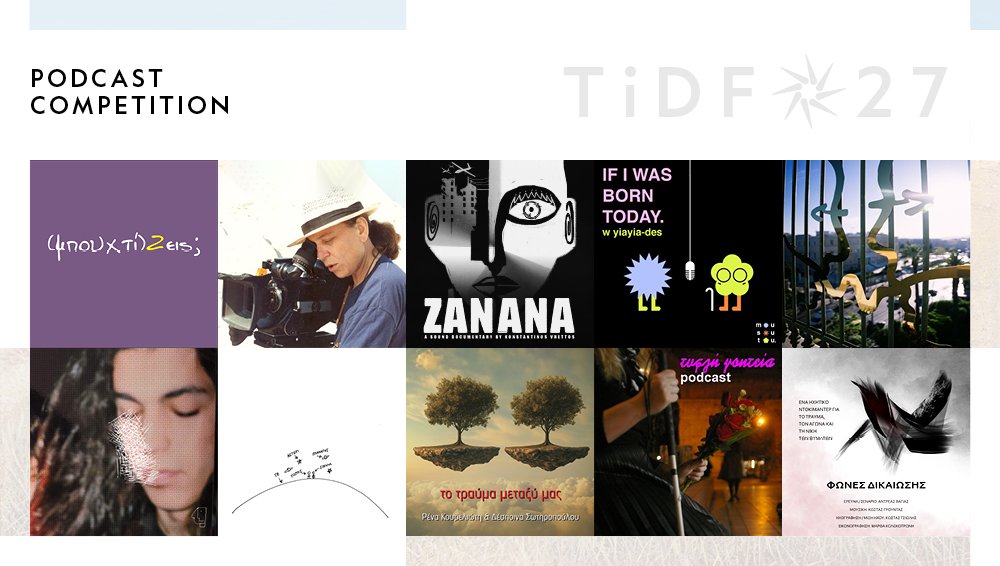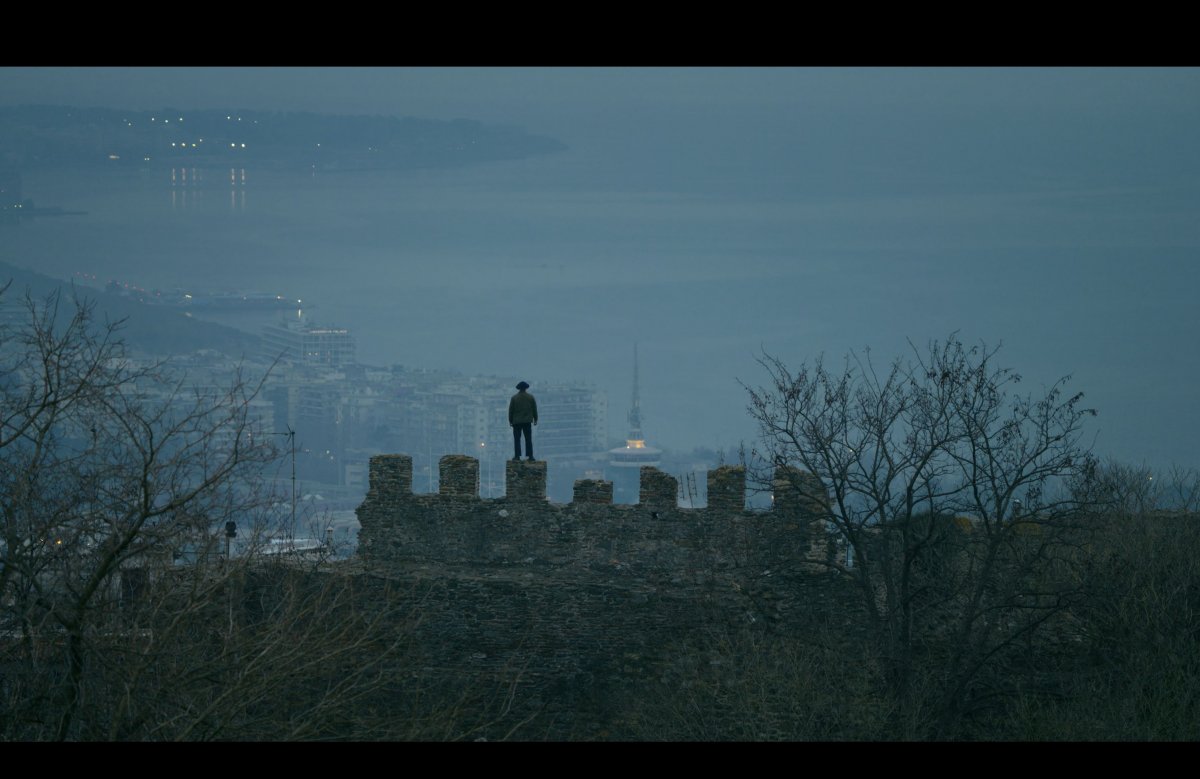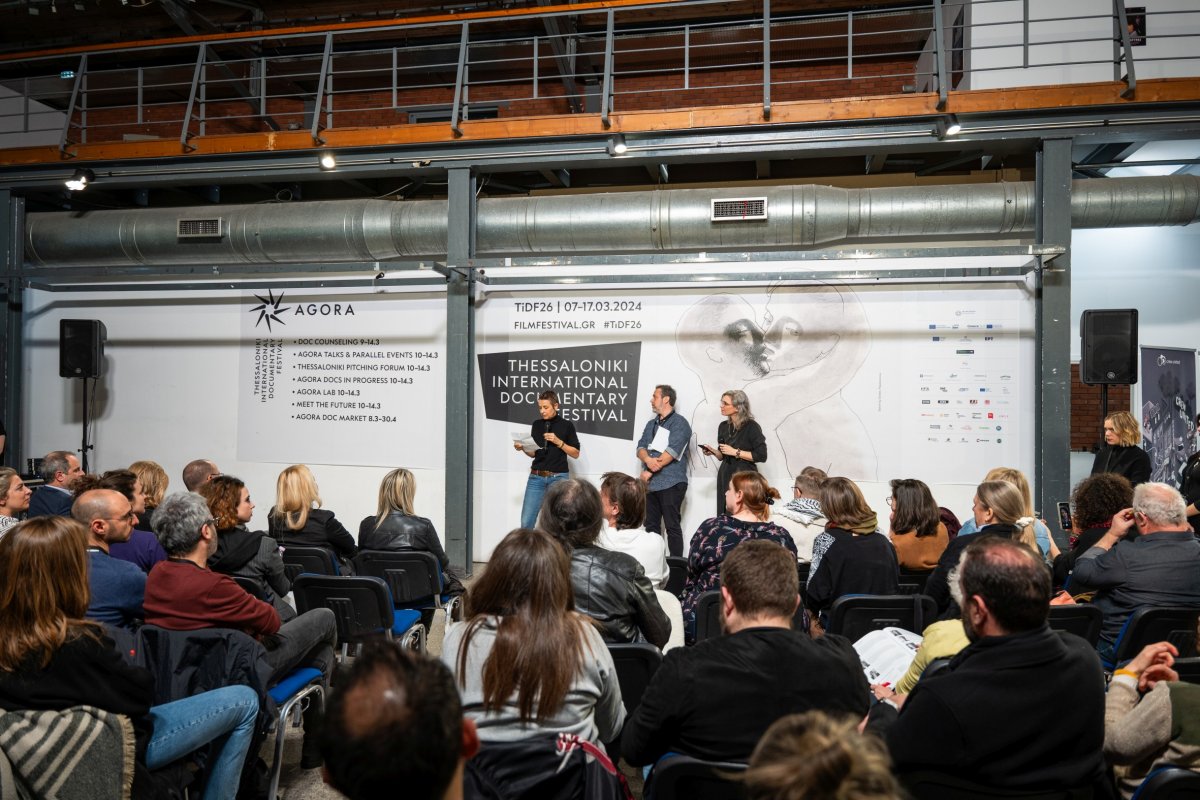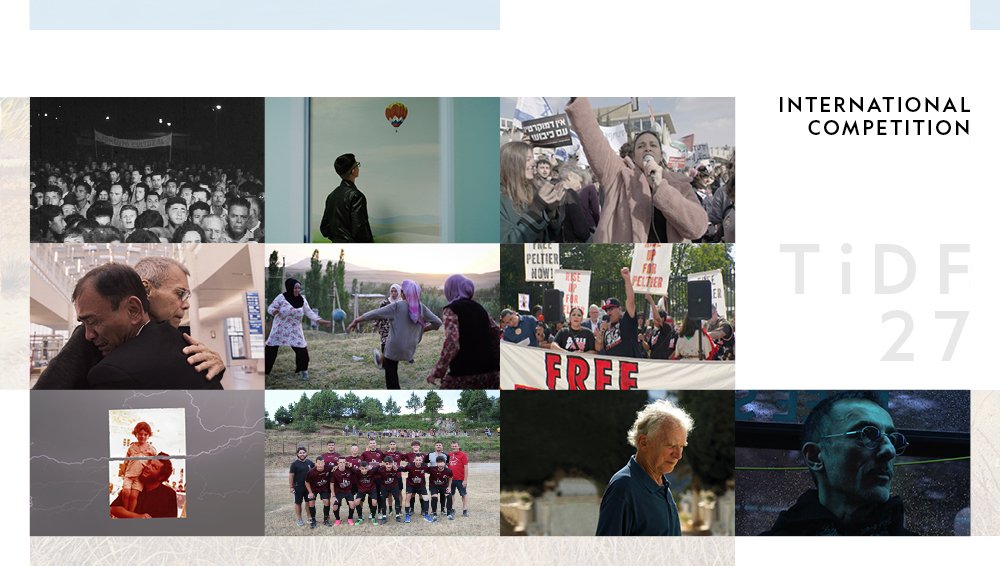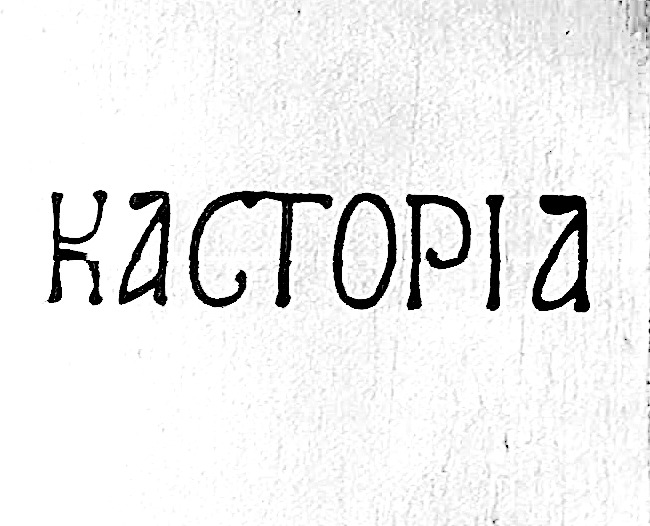Images of the 21st Century
11-20 March, 2016
PRESS CONFERENCE
INSIDE THE MIND OF FAVELA FUNK / THE DAY THE SUN FELL / A DIFFERENT AMERICAN DREAM
As part of the 18th Thessaloniki Documentary Festival, the directors Fleur Beemster (Inside the Mind of Favela Funk), Aya Domenig (The Day the Sun Fell) and Simon Brook (A Different American Dream) attended a press conference on Saturday 12 March, 2016.
Fleur Beemster spoke first. Her documentary Inside the Mind of Favela Funk deals with the love and relationships in the world of “favela funk”, the popular pornographic music from Rio de Janeiro’s deprived neighborhoods. The Dutch director explained how she came to discover this kind of music: “We made this documentary together with Elise Roodenburg, who has been living in a favela for some years now. The documentary is based on her research in favela funk music, the daily life and the music her friends there are listening to. The particularly pornographic lyrics caught her attention and she wondered why it was so popular among her female and male friends. And, in a way, this is how we started exploring the daily lives of the people living there”.
Answering the question of whether she felt uncomfortable or threatened during filming in the dangerous, high-crime world of a favela, the director said: “Favelas are usually depicted as creepy and dangerous places. People there can lose their lives for nothing. We didn’t have any trouble as to how we were treated, exactly because there was this connection we had, that I mentioned earlier. The protagonists of the film were with us at all times, so we didn’t feel threatened; we were always welcome no matter where we went. So, I could say that filming was a quite wonderful experience”.
As to how people manage to survive inside a favela, a place with its own rules, she remarked: “One of the heroes in the film says that most of his friends are killed and others are involved with drug-trafficking gangs. What I realized through my interviews with people in this film is that, in spite of their cruel everyday life, they don’t lose their smile and optimism. For me, this is a source of inspiration. I don’t live under such circumstances, but I can still learn a lot from these people, who are still keeping a positive approach to life, despite the tremendous difficulties they face”.
In her documentary The Day the Sun Fell, Aya Domenig, the granddaughter of a doctor on duty for the Red Cross during the 1945 atomic bombing of Hiroshima, approaches the experience of her deceased grandfather by recording the memories of people who shared the same experience. Referring to this documentary project, the Swiss-Japanese director stressed: “I had to make a personal documentary, because it is the story of my family. I started out this project wondering what my grandfather experienced when the atomic bomb fell. He had never talked about it, but for some time right before he died. I met some doctors and nurses who told me very interesting stories, while my grandmother did not remember anything, because my grandfather had never discussed it with her. Through this film, I tried to build a bridge between the story of my family and the audience”.
The film also touches the social impact on the lives of the people who lived through the bombing. The director noted on this subject: “After the war, there was a very strong social stigma, especially to the children of the victims. A hero in the film says that even the third generation still faces such discrimination. The atomic bomb is not a taboo subject, but nobody speaks about the social impact of the bombing”. She herself believes that the new generations have a different view on the subject: “The truth is that in Japan many young people know nothing about the bomb. In Tokyo, they asked young people what happened on August 6, 1945 and nobody knew. This piece of history is not adequately covered by the media. Only those living in Hiroshima know. Of course, with the Fukushima events, it all came to the surface again”. As for the way older people handle their memories, Ms. Domenig explained: “After the war, they remained silent. But as they reach old age, they begin to talk, because now they have nothing to lose. Today there are survivors of the bombing who speak to many filmmakers, while, there is an attempt to identify the victims. Many died and others survived the effects of radiation and there have been indeed many court cases on this issue”.
Simon Brook’s documentary A Different American Dream, takes the audience to North Dakota, where a sovereign Indian tribe sees the land of their ancestors being destroyed as a result of the boom in the oil extraction industry in the region. Referring to the future of these tribes, who, as a character in the film remarks, “suffer a cultural genocide”, the director said that in general he is “a hopeless optimist”. And he added: “I hope that things will improve. But I am a realist and I see that the situation is catastrophic. In the film, among other things, we see how their culture is connected with the land. When one seeks to destroy a culture, they destroy the land, depriving the people of their identity, their existence. In North Dakota, there is this small community, the people of which, not being able to live a traditional way of life, risk losing everything: The relationship with nature, with the land. The land is amazing there; it is magical. The hills have eyes and ears, as these people believe. Without being an astrologer or a politician, I am guessing that it has already been understood that they cannot keep on living like this. Things need to be improved, otherwise there is no future”.
The director chose not to include representatives of the other side, the oil industry, in the film. On this subject, he explained: “We discussed this with the producer of the film and decided that these people have nothing true to say to us. When you try to show that the earth is round, should you include the ones arguing that the earth is flat? Those people are liars, they are trying to convince us that the earth is flat. For example, the BBC used to give floor to people who deny climate change, but they no longer do so. The Indians in North Dakota keep on fighting. One of the film’s heroes is going to run for governor in the state. His opponent is a former member of the oil industry and it is therefore interesting to see what will happen during the race”.
Referring to North Dakota, an area with distinctive features and an extremely sparsely populated one, Mr. Brooke said: “As a hero in the film puts it, if you are not a farmer or a worker in the oil industry, you have no reason to live there. It is an unwelcoming area, even colder than some parts of Greenland. The sense of community is very different there. In the camp that we show in the film, there are German immigrants and workers in the oil industry from various places in the US, living in trailers, working there a few weeks and then leaving the place. The concept of community is starting to fade even among the Indians in the region, where traditions, traditional values ??and habits, are forgotten or lost”.



